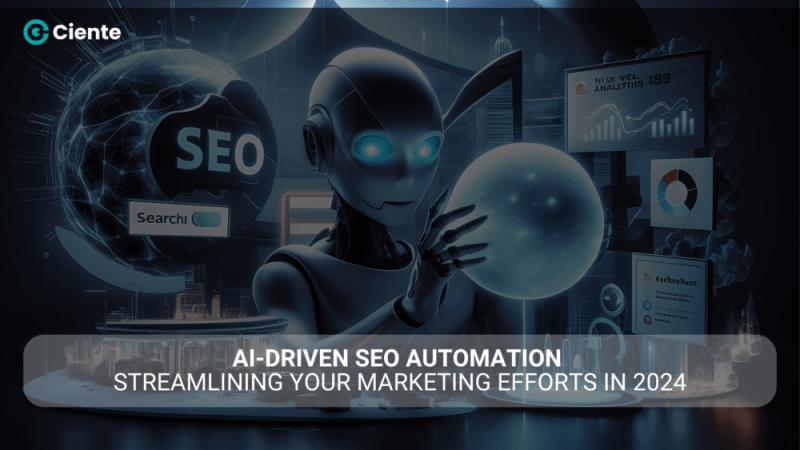How Cloud, AI, and Edge Computing Are Redefining Industry 4.0
The integration of Cloud, AI, and Edge Computing is
fundamentally reshaping the landscape of Industry 4.0, marking a significant
evolution in how industries operate and innovate. This tech article explores
these transformative technologies, their interconnections, and their
implications for modern industrial practices, while also considering the role
of a robust Martech strategy in leveraging these advancements.
The Foundations of Industry 4.0
Industry 4.0 represents the fourth industrial revolution,
characterized by the fusion of advanced technologies such as artificial
intelligence (AI), the Internet of Things (IoT), and data analytics. This
revolution is fundamentally changing manufacturing and production processes,
emphasizing the need for interconnected systems that can communicate and
operate in real-time. The objective is to enhance efficiency, productivity, and
responsiveness to market demands.
The Role of Cloud Computing
Cloud computing serves as a backbone for Industry 4.0 by
providing scalable resources and centralized data storage. It allows
organizations to access vast amounts of computational power and storage without
investing in expensive hardware. This enables industries to analyze large
datasets, train machine learning models, and implement AI-driven insights
effectively. However, the reliance on cloud services can introduce latency
issues, particularly in applications requiring immediate data processing and decision-making.
The Emergence of Edge Computing
Edge computing addresses some of the limitations of cloud
computing by enabling data processing closer to the source of data generation.
This decentralized approach minimizes latency, enhances data privacy, and
ensures that critical applications can function even with limited internet
connectivity. For instance, in smart factories, edge devices can analyze data
from sensors in real-time, allowing for immediate insights and actions that
optimize production processes.According to industry projections, by 2025, 75%
of data will be processed at the edge, highlighting its growing importance in
the digital landscape. This shift not only supports real-time analytics but
also reduces the volume of data transmitted to the cloud, alleviating bandwidth
constraints and improving overall system efficiency.
AI: The Driving Force
Artificial intelligence plays a pivotal role in Industry 4.0
by enabling machines and systems to learn from data and make informed
decisions. AI algorithms can analyze patterns, predict outcomes, and optimize
operations across various industrial applications. When combined with edge
computing, AI can deliver insights in real-time, enhancing operational
efficiency and enabling proactive maintenance strategies.For example,
predictive maintenance powered by AI can significantly reduce downtime in
manufacturing by anticipating equipment failures before they occur. This
capability not only saves costs but also extends the lifespan of machinery,
contributing to a more sustainable industrial environment.
The Synergy of Cloud, AI, and Edge Computing
The convergence of cloud computing, AI, and edge computing
creates a powerful ecosystem that enhances the capabilities of Industry 4.0. By
integrating these technologies, industries can achieve a more versatile and
efficient operational framework.
- Real-Time
Data Processing: Edge computing allows for immediate data analysis,
while cloud services provide the computational power needed for more
complex analyses.
- Scalability
and Flexibility: Cloud platforms can scale resources as needed,
accommodating the growing data demands of smart factories and IoT devices.
- Enhanced
Security: By processing sensitive data at the edge, organizations can
reduce the risk of data breaches associated with centralized cloud
storage.
This integrated approach not only drives operational
efficiency but also supports the development of innovative business models and
services.
Implications for Martech Strategy
In this rapidly evolving technological landscape, a
well-defined Martech strategy is essential for organizations aiming to leverage
the benefits of cloud, AI, and edge computing. This strategy should focus on:
- Data-Driven
Decision Making: Utilizing real-time data analytics to inform
marketing strategies and operational decisions.
- Customer
Engagement: Implementing AI-driven insights to enhance customer
experiences and personalize interactions.
- Operational
Efficiency: Streamlining processes through automation and real-time
analytics, enabling quicker responses to market changes.
A robust Martech strategy ensures that organizations can
effectively harness the power of these technologies, driving growth and
maintaining a competitive edge in the market.
Conclusion
The interplay between cloud computing, AI, and edge
computing is redefining the parameters of Industry 4.0. As industries continue
to embrace these technologies, they unlock new opportunities for innovation,
efficiency, and sustainability. A strategic approach that incorporates a strong
Martech strategy will be crucial for organizations looking to navigate this
complex landscape and fully realize the potential of the fourth industrial
revolution.By understanding and leveraging the unique strengths of cloud, AI,
and edge computing, businesses can position themselves at the forefront of
technological advancement, ready to meet the challenges and opportunities of
the future.








Comments